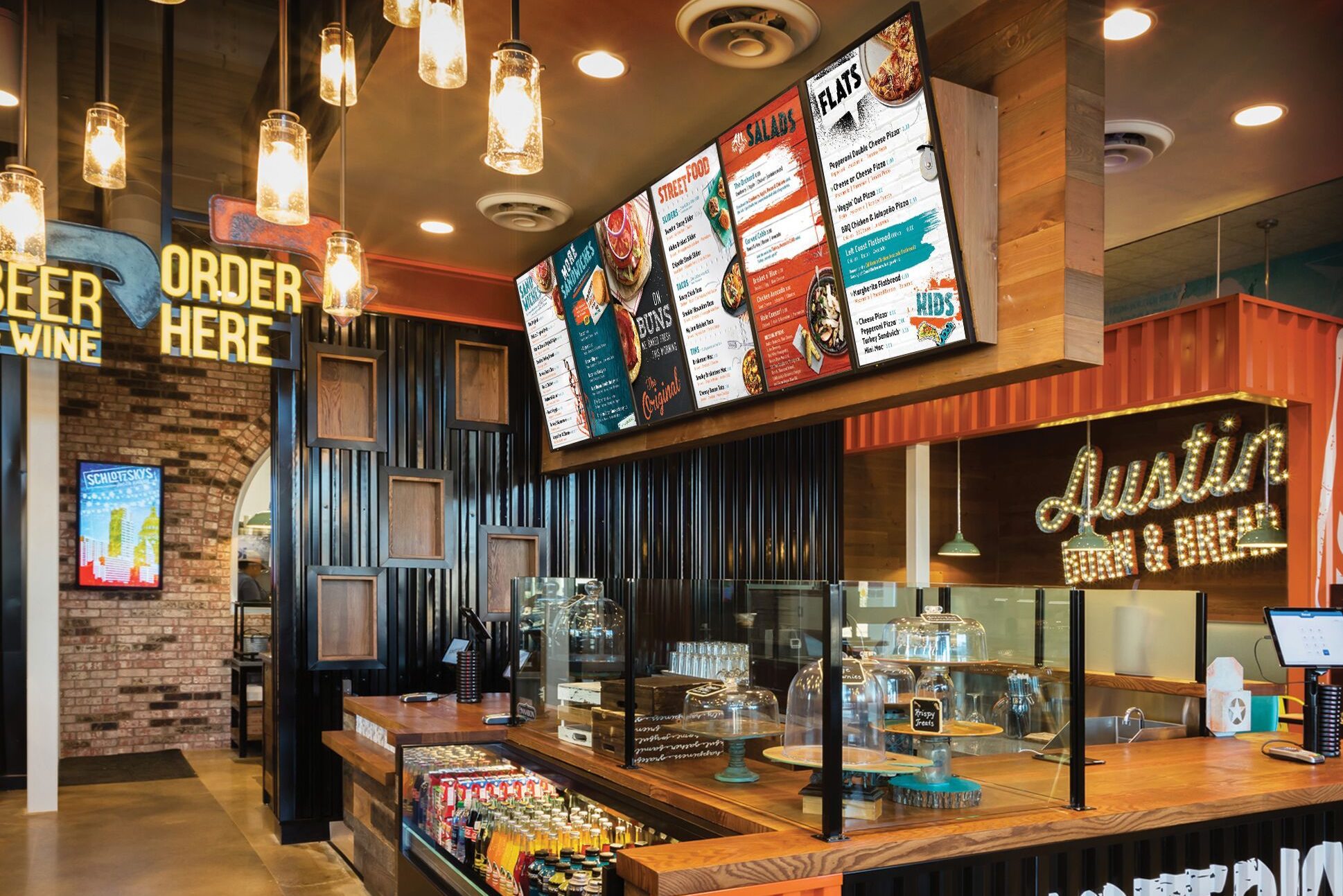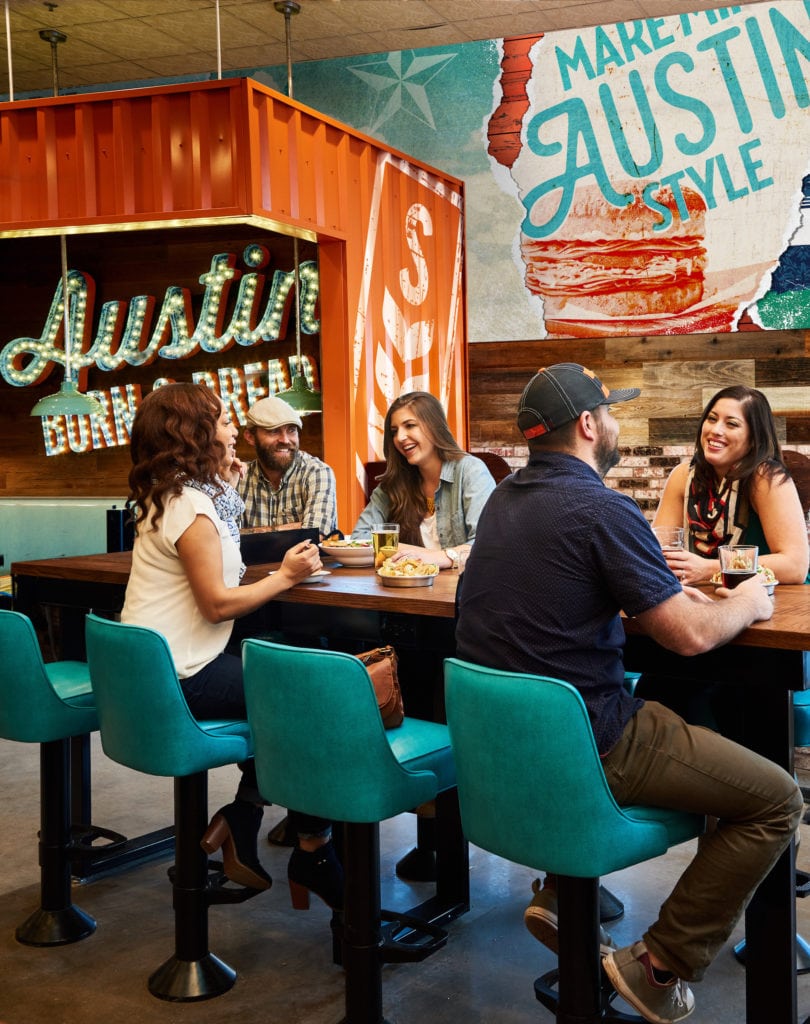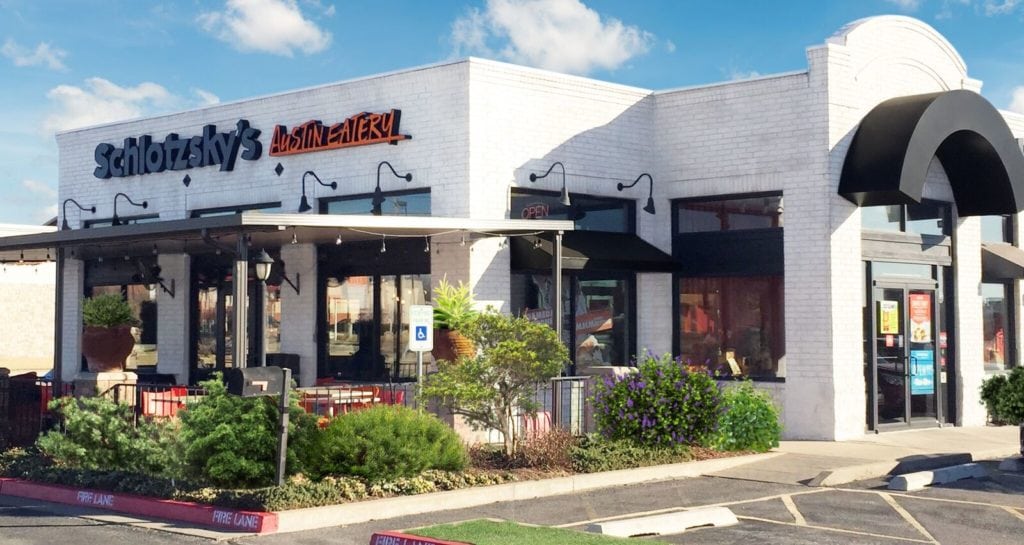The Cost of Remodeling a Fast-Fine Concept

Photo Caption: Millennials are welcome here.
Skift Take
It's hard to go a week without hearing of a restaurant that has newly embraced some type of fast-casual, fast-fine, fine-casual model. Here, we look at the costs associated with actually making that leap through the lens of a regional Southern sandwich chain.
When 45-year-old Austin-born sandwich chain Schlotzsky's decided it was time for a rebrand, it didn't have to hunt far for an updated concept. The barbecue-laden food truck scene that Austin had become nationally associated with, thanks in part to events with a nationwide draw like South by Southwest, proved to be a goldmine to draw from for Schlotzsky's rebrand.
"Our research told us that what consumers are looking for is really exactly where we are," Schlotzsky's president Kelly Roddy told Skift Table. "So why don’t we take credit for what we’ve always been?"
The New Look
The rebranded store concept, dubbed Schlotzsky's Austin Eatery, debuted not in Austin where the chain was founded, but in Atlanta, Georgia, where Schlotzsky's corporate headquarters are located. Alongside the usual sandwiches and pizza, Schlotzsky's menu now touted a section of "Street Food" that included an array of tacos, sliders, and "tins," side dishes served in the same small loaf pans used to bake bread from scratch in the morning (a Schlotzsky's hallmark).
The food was plated on paddle boards and servers arrived tableside, prepared to describe the apricot jam in the sliders and the pineapple kale slaw included with the Hawaiian tacos. Beer and wine were added to the beverage menu. Music from indie Austin-based bands pumped through the speakers. Updated graphics bathed the restaurant in a this-definitely-isn't-Subway mood.

An updated Schlotsky's Austin Eatery dining room.
The second rebranded restaurant launched in Tulsa, Oklahoma. Schlotzsky's Austin Eatery didn't open in Austin until the seventh or eighth test store, according to Roddy. As it turned out, the Austin Eatery concept was one that traveled well. "We tested the name extensively and it actually scored higher in outside cities versus in Texas," Roddy explained. They tested the name against simply "Schlotzsky's Eatery" as well and nine times out of ten, people would gravitate towards the concept with Austin in the name. "Austin didn’t conjure up any negative feelings," Roddy said.
It took about eighteen months from the point of opening up the first Schlotzsky's Austin Eatery in Atlanta in December 2016, to deciding that the concept was ready to be pushed through to every existing Schlotzsky's location this past May. The restaurant's parent company, Focus Brands (which also owns Cinnabon, Auntie Anne's, and Moe's Southwest Grill, among others) invested hundreds of thousands of dollars into researching Schlotzsky's rebirth as a fast-fine concept and tweaking the model with each new test location.
"One of the advantages of being with a portfolio like Focus Brands is that we can afford to do things like that," Roddy said. "A small brand couldn’t afford to do the kind of research that we did."
The Cost of the Remodel
The company had to spend a generous amount of time and money on testing the Austin Eatery concept because, when it came time to churn out the store remodels, Schlotzsky wouldn't be the one bankrolling those changes. "The franchisees are the ones who have to invest the money to do this so we really wanted to vet it out and prove it out and spend the time and money and research and make sure that it’s what the consumer wants," Roddy said.
According to a publicly-filed Schlotzsky's franchisee agreement dated April 2018, the total investment required to operate a franchised Schlotzsky's restaurant is between $500,000 to $800,000. Included in the contract is the requirement to remodel any existing stores every seven years, and Roddy was adamant that as Schlotzsky's asked its franchisees to convert over to Schlotzsky's Austin Eatery, the costs would run the same as a regular store remodel. Depending on how much work has to be done, those costs will range from $30,000 to $175,000, according to Roddy. (In the agreement, regular remodels are estimated to cost between $25,000 to $150,000.)
At the most basic level, the updates included new paint and graphics, installing new signage and menu boards, and new staff uniforms. Employees undergo new training with the help of an augmented reality training app powered by Oculus Training.

A new Schlotzsky's Austin Eatery in Tulsa, Oklahoma.
Each new store serves craft beer and wine, which requires a liquor license that Roddy estimated would cost most restaurants between $2,000 to $3,000, based on general location. Some of the new Austin Eateries have installed a "Bottoms Up" automatic beer pouring system that requires little oversight from employees and quickly fills the glass with an exact amount of beer every time. The installation costs about $10,000 versus $7,000 for a regular alcohol serving station.
The addition of beer and wine especially has helped raised average check sizes by 10 percent across the new restaurants. More customers are coming to Schlotzsky's for dinner as well, an encouraging sign for a chain that has traditionally been thought of as a lunch-centric business.
Menu prices did go up in the new concept, although Roddy broke that down to say that existing menu items were priced the same and new items were priced a little higher because there was more food included with each order. Three tacos at the Atlanta-based Austin Eatery cost $8, while four Aloha brisket sliders also cost $8. The regular sandwich menu ranges between $5 and $10, depending on size.
Sales Lifts
The average net sales for a franchised Schlotzsky's in 2017 was $964,660, and average sales for a company-owned restaurant were $1.6 million in the same time period, according to financial statements included in the franchise agreement. The average EBITDA margin (earnings before interest, taxes, depreciation, and amortization), a measure of profitability, at company-owned restaurants was 12 percent last year, which is considered a successful rate in the restaurant industry. (Schlotzsky's did not disclose the average profit margin for a franchised restaurant in the agreement, stating that franchisees aren't required to report all details to the company and each owner can vary in how they report their expenses.)
Early signs are good that the Austin Eatery remodel will further boost sales as franchisees increasingly start the process of converting their locations. Once construction plans are mapped out and proper licenses are procured, the remodeling process takes about a week and a half. "It’s happening a lot faster than I would have thought," Roddy said.
Over 50 restaurants will adopt the new concept by the end of this year, and by the end of 2019, the company aims to have all of the chain's 400-plus locations rebranded as Schlotzsky's Austin Eatery.

The travel industry's top event returns this fall.
September 16-18, 2025 - NEW YORK CITY
